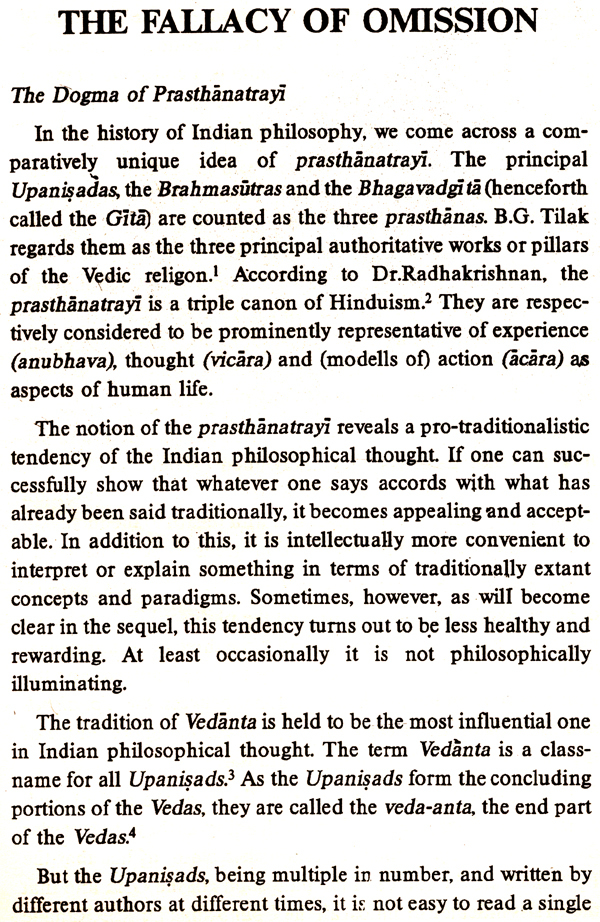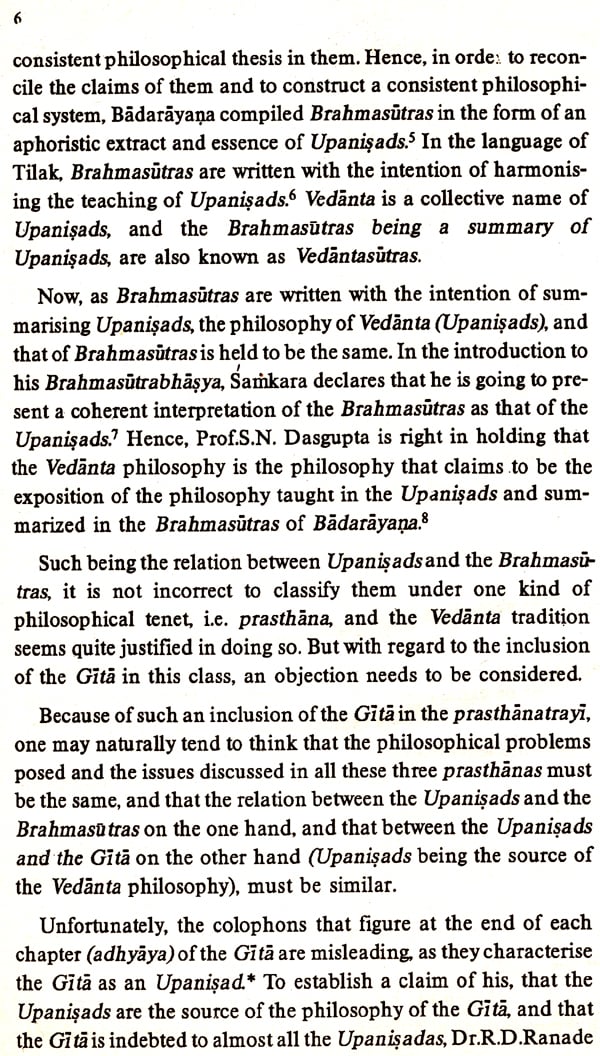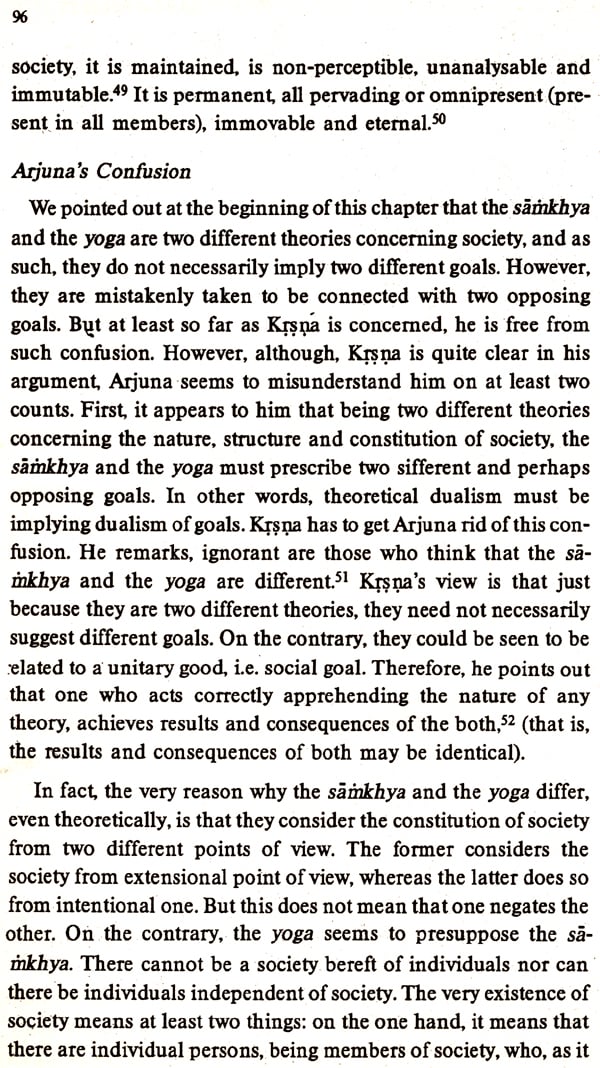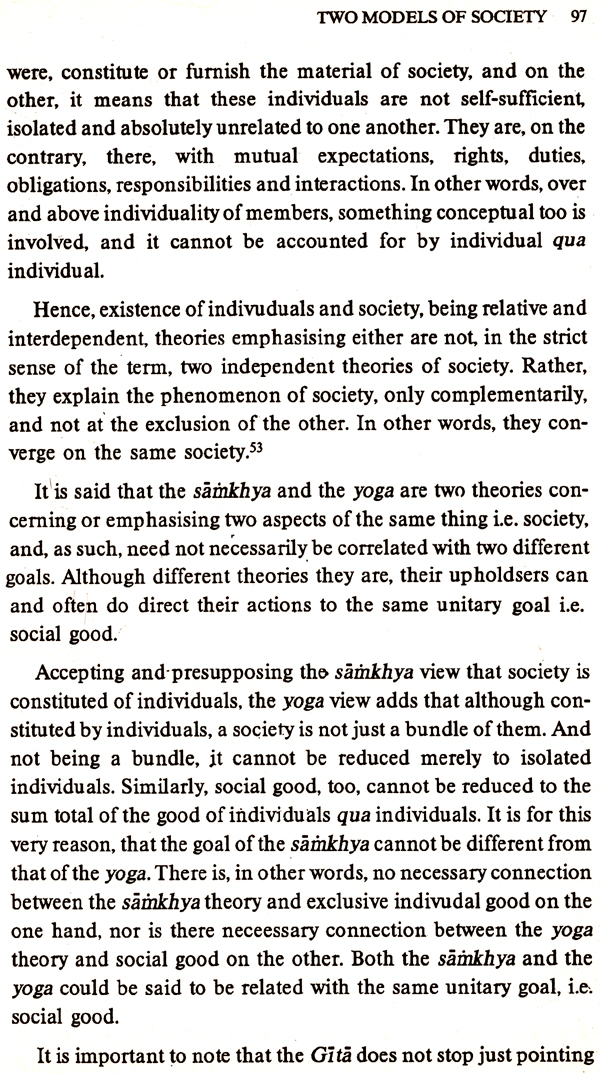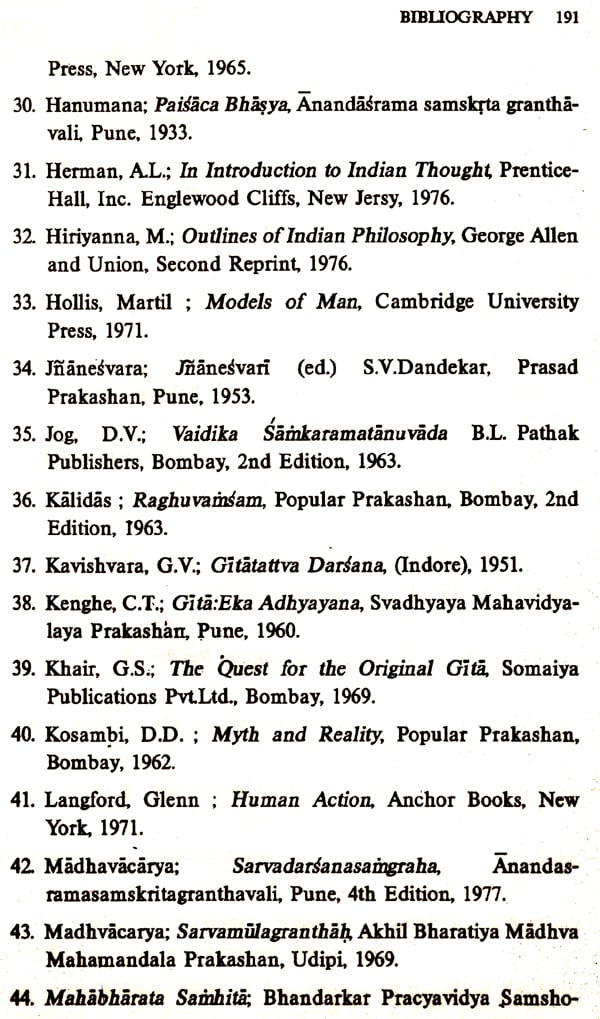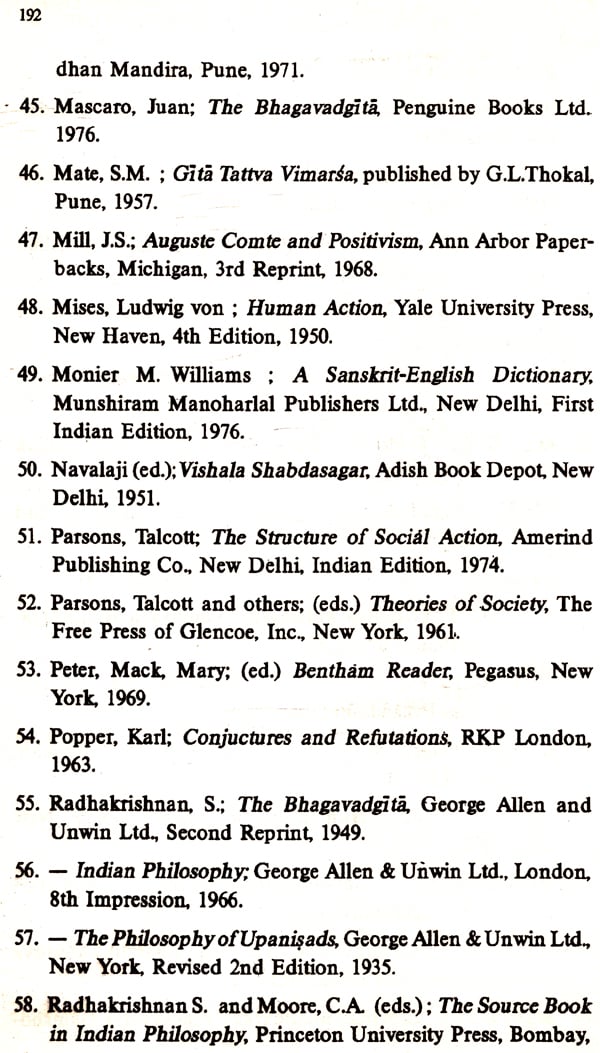
The Gita - A Theory of Human Action (An Old Book)
Book Specification
| Item Code: | NAS168 |
| Author: | S.S. More |
| Publisher: | Sri Satguru Publications |
| Language: | English |
| Edition: | 1990 |
| ISBN: | 8170302227 |
| Pages: | 216 |
| Cover: | HARDCOVER |
| Other Details | 9.00 X 6.00 inch |
| Weight | 340 gm |
Book Description
Dr. S.S. More, M.A., Ph.D. in Philosophy and also M.A. in Ancient Indian History and Culture from Poona University, is a Lecturer in Philosophy. He has to his credit a collection of critical essays in Cultural history of India. The work published in Marathi has been appreciated by scholars. Besides, he also has number of papers on different theses published in different journals, and some of them have been greatly appreciated by persons of intellectual standing.
Right from the time of my being a post-graduate student of the Department of Philosophy, Poona University, the seeds of this project were sown in my mind during discussions with Prof.M.P. Marathe. But then it was in the form of the feeling of dissatisfaction towards the extant interpretations of the Gita - ancient or modern. This feeling was reinforced by my further thinking over the problem as also by some problems posed before me by some of my students. And it made me undertake the research on the topic.
Much has been written on the Gita since Samkara who informs us that there were commentaries on the Gita, even prior to him.
However, almost all the commentaries on and interpretations of the Gita create an impression that Arjuna's problem and Krsna's answer to it are not relevant to each other. They tend to interpret what Krsna has said independent of and without reference to what Arjuna has said. This is tantamount to saying that either Arjuna's problem is a pseudo and an unimportant one or if it is important, Krsna deliberately evades answering it. But the former alternative does injustice to Arjuna, whereas the latter unwarrantably prejudies us against Krsna.
Inspite of this, commentators went on ignoring what Arjuna has said in the first chapter of the Gita, for, they wanted to interpret the Gita in such a way that their own metaphysical, ontological or epistemological doctrines could be fortified and sustained by it. In consequence, various such interpretations came to be foisted on the Gita irrespective of the consideration whether or not they would amount to be appropriate answers to Arjuna's problem.
The real important of the Gita, according to us, is social and philosophical. It is a treatise concerning the problems of human action, especially human social action. And it is really hard to maintain that such problems could be answered in terms of metaphysical doctrines, however satisfactory they might be in metaphysics, although the former being non-incoherent with the latter cannot be ruled out in advance.
It is for this reason that we concentrated on the problem posed by Arjuna in the first chapter of the Gita. There, we were convinced that as the first chapter presupposes the background of the Mah5bhirata, to which it is inseparably related, the Git5 could be interpreted satisfactorily only on the background of the Mahabh5- rata itself. Instead of interpreting it in accordance with the Upanisadas we attempted to interpret it in the light of the Mahabharata. The traditional dogma of Prasthanatrayi has, therefore, to be abandoned. Hence, our plea for detraditionalization and embedding the Gita in the Mahabharata.
The Gita, looked at in this way, turns out to be consistent with the first chapter of it, neglected hence before and also with the Mahabharata. Thus, the present work attempts to show that there is a -thread of consistency running between the Mahabharata and the Git5, the first chapter of the Gita being the connecting link. Understood in this way there is neither need to sever the Gita from the Mahabharata nor is there any purpose in isolating the rest of the seventeen chapters from the first chapter of the Gita. This not only guarantees the genuineness of Arjuna's problem, but also the significance and relevance of Krsna's answer to it.
The problem of Arjuna, to be more precise, stems from the issue of justification of human action. Hence, principally, the Gi-15 is an attempt towards formulation of a theory of justification of human action.
**Contents and Sample Pages**

